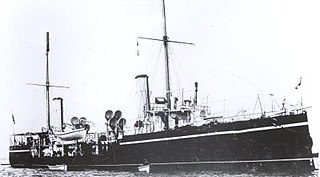
HMS Antelope was a Royal Navy Alarm-class torpedo gunboat. She was launched in 1893, reduced to harbour service from 1910 and was sold for scrapping in 1919.
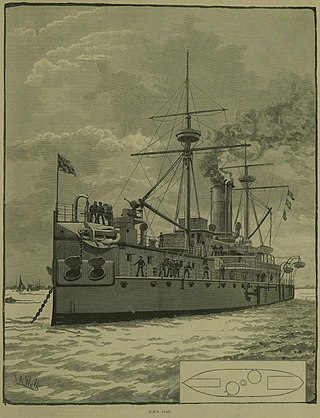
HMS Ajax was the name ship of her class of ironclad battleships built for the Royal Navy during the 1870s. Completed in 1883, she was immediately placed in reserve until 1885 when the ship was commissioned for the first time. Later that year, Ajax was assigned as a coast guard ship in Scotland and remained there for the next six years. She was reduced to reserve again in 1891 and was taken out of service a decade later. The ship was sold for scrap in 1904 and subsequently broken up.
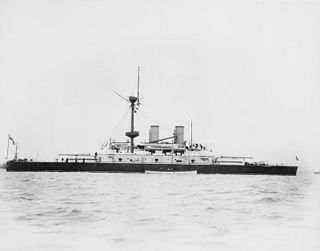
HMS Howe was an Admiral-class ironclad battleship built for the Royal Navy during the 1880s. The ship was assigned to the Channel Fleet in mid-1890 and was badly damaged when she ran aground in late 1892. After repairs were completed, Howe was transferred to the Mediterranean Fleet in late 1893. She returned home in late 1896 and became a guardship in Ireland. Howe remained there until late 1901 when she was assigned to the Reserve Fleet. The ship was paid off in three years later and then sold for scrap in 1910.

HMS Virago was a B-class torpedo boat destroyer of the British Royal Navy. She was completed by Laird Brothers, Birkenhead, in 1897. One of four Quail-class destroyers she served during the Great War and was sold off after hostilities ended.
HMS Seal was a B-class torpedo boat destroyer of the British Royal Navy. She was completed by Laird, Son & Company, Birkenhead, in 1897.
HMS Locust was a B-class torpedo boat destroyer of the British Royal Navy. She was launched by Laird, Son & Company, Birkenhead, on 5 December 1896. She served in the Mediterranean between 1902 and 1906, and was used for patrol and escort duties during the First World War

HMS Bruizer was an Ardent-class destroyer which served with the Royal Navy. She was launched on 27 February 1895 by John Thornycroft at Chiswick, and was sold on 26 May 1914.

HMS Dasher was a Charger-class destroyer which served with the Royal Navy. She was built by Yarrow Shipbuilders in 1895, served in home waters and was sold in 1911.

HMS Lynx was a Ferret-class destroyer which served with the Royal Navy. She was launched in 1894 and sold in 1912.
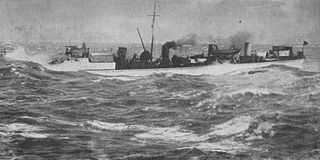
HMS Banshee was one of three Banshee-class destroyers which served with the Royal Navy.

HMS Racer was a Royal Navy Mariner-class composite screw gunvessel of 8 guns.

HMS Thetis was a 36-gun fifth-rate frigate of the Royal Navy. After nearly a decade of service with the British, she was transferred to Prussia in exchange for two steam gunboats. She served with the Prussian Navy, the North German Federal Navy and the Imperial German Navy as a training ship until being stricken in 1871. Thetis was subsequently converted into a coal hulk and broken up in 1894–95.
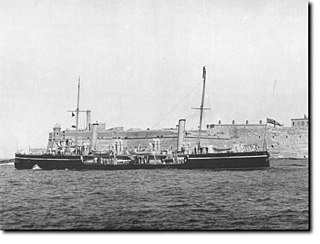
The sixth HMS Harrier was a Dryad-class torpedo gunboat. She was launched at Devonport Dockyard on 20 February 1894, and saw service in the Mediterranean and in fishery protection. She served as a minesweeper during World War I and was sold for commercial use in 1920.

HMS Merlin was the name ship of her class of three 2-gun paddle packet boats built for the Royal Navy during the 1830s. She was converted into a survey ship in 1854 and then into a gunvessel two years later. The ship was decommissioned in 1858 and was sold into commercial service in 1863.

The Grasshopper-class torpedo gunboat was a class of torpedo gunboat built for the Royal Navy in the late 19th century. All three ships were scrapped before World War I.

HMS Speedy was a Alarm-class torpedo gunboat of the British Royal Navy. She was built by Thornycroft from 1892–1894. She was converted to a minesweeper in 1908–1909 and continued these duties during the First World War. Speedy was sunk by a German mine on 3 September 1914.
HMS TB 81, originally named Swift, was a torpedo boat that served with the British Royal Navy. She was built in 1884–1885 by the shipbuilder J Samuel White as a private venture, and was purchased for the Royal Navy in 1885, and was one of the largest torpedo boats of her time. She remained in service into the First World War, when she was employed as a patrol boat, finally being sold for scrap in 1921.
HMS Gossamer was a Sharpshooter-class torpedo gunboat of the British Royal Navy. She was built at Sheerness Dockyard from 1889–1891. She was converted to a minesweeper in 1909 and continued these duties during the First World War. Gossamer was sold for scrap in 1920.
HMS Alarm was a torpedo gunboat of the British Royal Navy and the name ship of her class. Alarm was built by Sheerness Dockyard from 1891–1894. She was sold for scrap in 1907.













